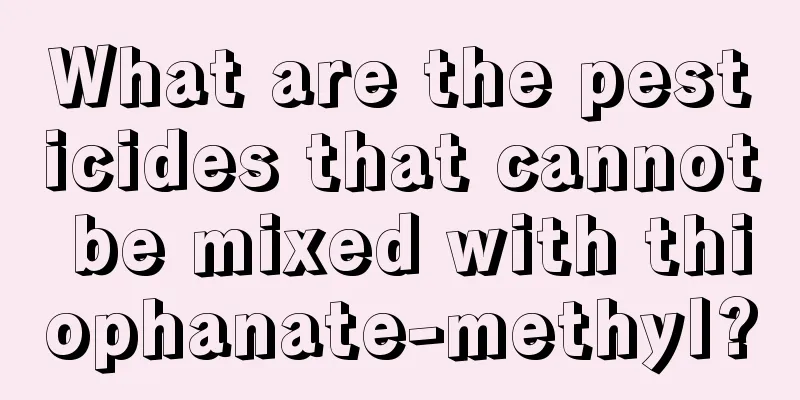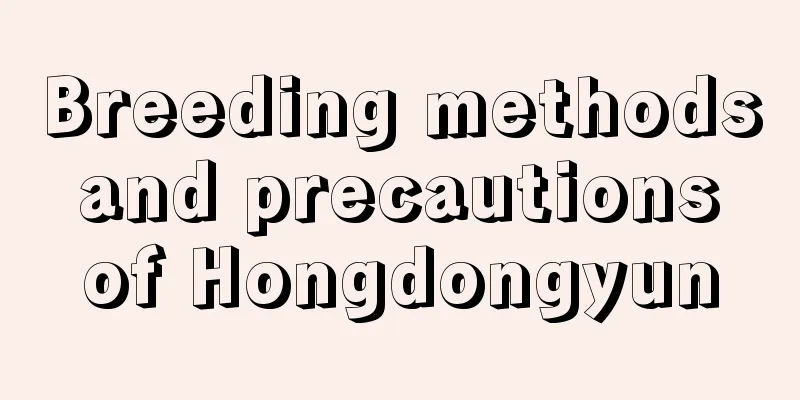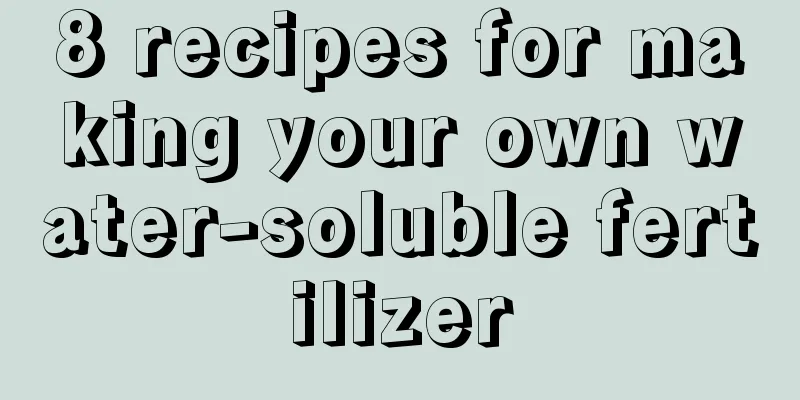What are the pesticides that cannot be mixed with thiophanate-methyl?

|
Thiophanate-methyl is a new, broad-spectrum fungicide that has the characteristics of high efficiency, broad spectrum, and no pollution to the environment. It has good preventive effects on a variety of bacterial and fungal diseases. So what are the pesticides that cannot be mixed with thiophanate-methyl when using it? Let’s learn more about it below. Pesticides that cannot be mixed with thiophanate-methyl Thiophanate-methyl cannot be mixed with strong acid or alkaline pesticides, including diazinon, chlorpyrifos, Bordeaux mixture, sulfur suspension concentrate, lime sulfur, etc. But in fact, thiophanate-methyl has good compatibility with other pesticides. In addition to the above pesticides, it can be mixed with most pesticides. Especially when mixed with similar drugs, it has a synergistic effect and can significantly improve the activity of the drug. How to use Thiophanate-1? 1. Usage (1) Prevention and control of peach perforation disease: Use 600 times diluted 1% thiophanate-methyl aqueous solution or 800 times diluted 1.5% thiophanate-methyl emulsion, spray once every 7 days. The number of sprayings can be flexibly controlled according to the condition of the disease. (2) Prevention and control of downy mildew and black spot of pear trees: When climatic conditions are favorable for the occurrence of the disease, 1.5% thiophanate-methyl emulsion in water at 800 times dilution can be used and sprayed once every 5-7 days for 2-3 times in a row. (3) Prevention and treatment of wolfberry black fruit disease: Using the drug in the early stage of the disease can effectively protect the plants from infection by pathogens. Increasing the dosage after the disease occurs can significantly control the spread of the pathogen, thereby achieving the dual effects of protection and eradication. Use 800-1000 times diluted 1.5% thiophanate-methyl, spray once every 5-7 days, for 2-3 times in a row. (4) Prevention and control of wheat fusarium head blight: Generally, spraying begins when the wheat ear is 5%-10% in the flowering period. The prevention and control period should also be flexibly determined according to the weather. 1.5% thiophanate-methyl emulsion in water 40-50 ml/mu and 27% pentamethylenetetracycline·thiophanate-methyl 25-35 ml/mu can be used. 2. Precautions for use (1) The safe interval for use on cucumbers is 3 days, and it can be used up to 3 times per season. (2) It is prohibited to clean pesticide application equipment in rivers, ponds and other water bodies. (3) Wear protective clothing and gloves when using to avoid inhalation of the drug solution. (4) It is slightly toxic to bees and silkworms, and moderately toxic to birds. It is prohibited to use in bird protection areas and near silkworm rooms and mulberry gardens . In general, thiophanate-methyl can effectively prevent and control a variety of crop diseases, and it also has low toxicity and environmental impact. It is a safe, highly effective, low-toxic, broad-spectrum fungicide. However, in actual application, the recommended dosage and usage instructions in the product instructions should be strictly followed to ensure the efficacy of the drug and reduce the impact on the environment.
|
<<: Is it good for native tulips to rebloom? Do they bloom every year?
>>: How to grow potted jade plants and what to do if they get sick
Recommend
How to prune potted jasmine
1. Pruning during the growing season 1. Reasons f...
How to use rooting powder for lucky bamboo
1. Usage time The function of rooting powder is t...
Causes and treatments for yellow leaves of jade tree
1. Inappropriate light exposure Reason: Jade plan...
Do cherry trees like water or drought?
Do cherry trees prefer moisture or drought? The c...
How to grow Dendrobium officinale
1. Maintenance methods 1. Temperature: Dendrobium...
Grafting and cutting of night-blooming primrose
Grafting method of night-blooming primrose For gr...
Garlic planting time and method, how to plant garlic
1. Planting time When planting garlic, the planti...
How does the Asian ash tree survive the summer?
1. Normal sunlight The ash tree is a summer speci...
Mango potted plant making video
Mango potted plant making video How to make a man...
Do orchids prefer shade or sun?
Do orchids prefer shade or sun? Orchid flower is ...
Cultivation methods and precautions of celandine
1. Maintenance methods 1. Light: Greater celandin...
What is the best month to plant figs?
When to plant figs Figs are planted in spring bec...
Phalaenopsis care and watering
Phalaenopsis, this elegant and delicate plant, is...
How to Identify Red-Leaf Nandina
1. Appearance Red-leaf Nandina domestica is a shr...
Prevention and control of common diseases of Christmas cactus!
Common diseases The symptoms of anthracnose, rot ...









